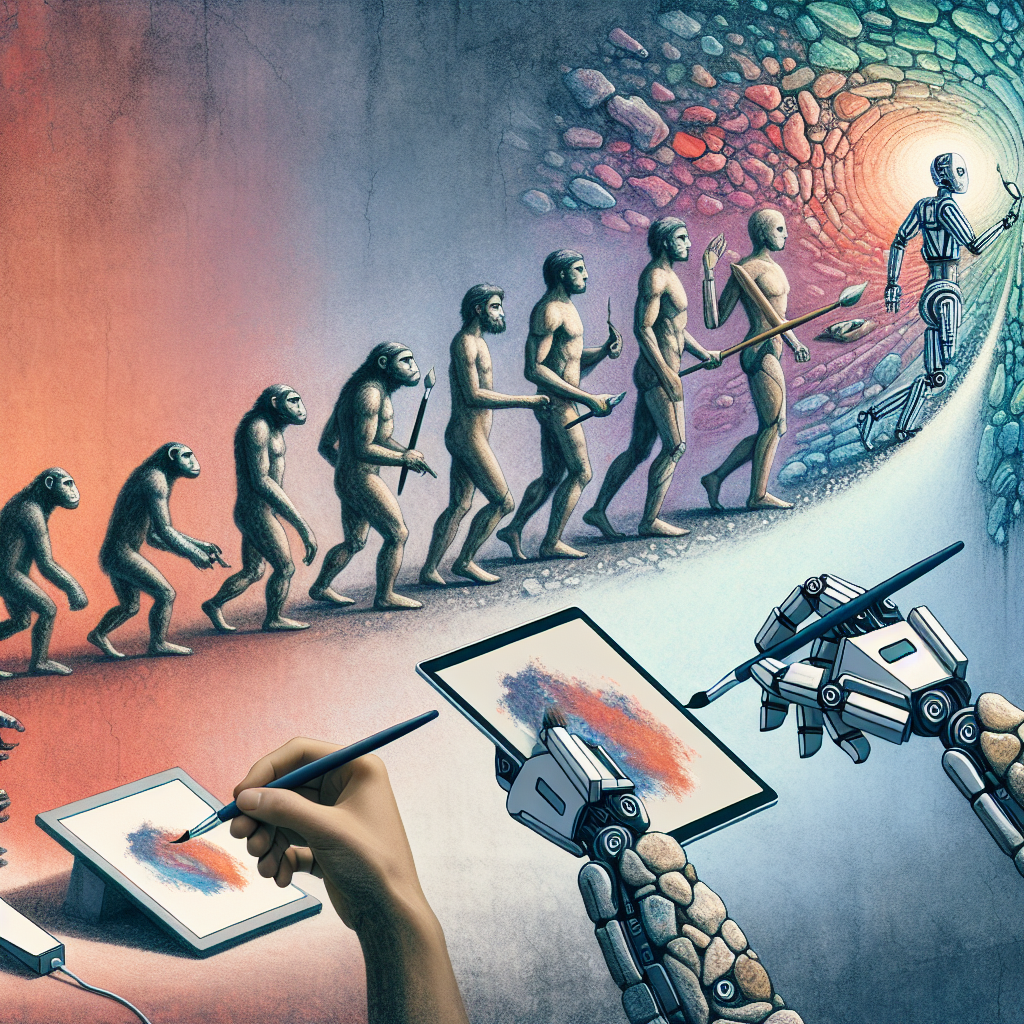Artificial intelligence (AI) has been a hot topic in recent years, with advancements in technology enabling machines to perform tasks that were once thought to be exclusive to human intelligence. One area where AI has made significant progress is in the field of creativity, particularly in the realm of art. AI is revolutionizing the way we think about art, challenging traditional notions of creativity and pushing the boundaries of what is possible in the world of artistic expression.
The Evolution of Creativity
The concept of AI creating art may seem like a futuristic idea, but it has already become a reality. AI has the ability to generate original artworks, music, and literature, blurring the lines between man and machine. One of the most well-known examples of AI in art is the painting “Edmond de Belamy” created by the French art collective Obvious. The painting, which depicts a man with a blurred face, was generated entirely by an algorithm trained on a dataset of 15,000 portraits from the 14th to the 20th centuries.
AI is also being used to assist artists in their creative process, providing them with new tools and techniques to explore. For example, Google’s DeepDream algorithm can transform ordinary images into surreal, dream-like creations by enhancing and exaggerating patterns and shapes. Artists can use this tool to generate new ideas and inspiration for their work, opening up new possibilities for artistic expression.
Another area where AI is shaping the future of art is in the field of music composition. AI algorithms can analyze vast amounts of musical data to generate original compositions that mimic the style of famous composers or create entirely new genres of music. Companies like Amper Music are using AI to create custom music tracks for commercials, films, and other media, revolutionizing the way music is produced and consumed.
AI is also being used in the world of literature, with algorithms capable of generating text that mimics the style of famous authors or creating entirely new narratives. OpenAI’s GPT-3 (Generative Pre-trained Transformer 3) model is one of the most advanced language models currently available, capable of generating coherent and contextually relevant text in a wide range of styles and genres. Writers can use this tool to generate ideas, improve their writing skills, or even collaborate with AI to co-author a novel.
The impact of AI on the future of art is profound, challenging traditional notions of creativity and expanding the possibilities of artistic expression. As AI continues to evolve and improve, we can expect to see even more innovative and groundbreaking works of art created by machines, blurring the lines between human and artificial creativity.
FAQs
Q: Can AI truly be considered creative?
A: While AI may not possess consciousness or emotions like humans, it can still be considered creative in its ability to generate original and innovative works of art. AI algorithms are capable of exploring vast amounts of data and generating new ideas and concepts that may not have been possible for humans to conceive. In this sense, AI can be seen as a tool for augmenting and enhancing human creativity, rather than replacing it.
Q: Are there ethical considerations to be aware of when using AI in art?
A: As with any technology, there are ethical considerations to be aware of when using AI in art. One of the main concerns is the potential for AI to replace human artists, leading to job displacement and loss of creative autonomy. It is important for artists and creators to use AI as a tool for collaboration and exploration, rather than as a replacement for human creativity. Additionally, there are concerns about bias and discrimination in AI algorithms, which can perpetuate harmful stereotypes and reinforce existing power imbalances in society.
Q: How can artists incorporate AI into their creative process?
A: Artists can incorporate AI into their creative process in a variety of ways, depending on their medium and artistic goals. One approach is to use AI as a tool for generating ideas and inspiration, such as using image-generating algorithms to create visual concepts or language models to generate story ideas. Artists can also use AI to enhance their existing work, such as using music composition algorithms to create custom soundtracks for their projects or using style transfer algorithms to create unique visual effects. Ultimately, the key is to experiment and explore the possibilities of AI in art, pushing the boundaries of creativity and expression.
In conclusion, the evolution of creativity through AI is shaping the future of art in unprecedented ways. From generating original artworks to assisting artists in their creative process, AI is revolutionizing the way we think about art and challenging traditional notions of creativity. As AI continues to evolve and improve, we can expect to see even more groundbreaking works of art created by machines, blurring the lines between human and artificial creativity. It is an exciting time for the world of art, as we witness the transformative power of AI in shaping the future of artistic expression.

